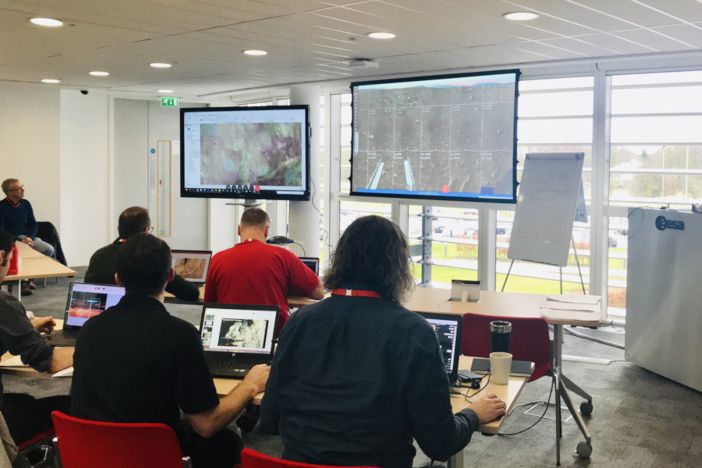Engineers at the European Space Agency’s centre in Oxfordshire, UK have completed a series of tests across nearly 6,900 miles (11,000 km) to see how a rover destined for the surface of Mars reacts to commands across large distances.
The ExoMars rover was being run at the Atacama desert in Chile because the conditions there are the closest on Earth to a Martian environment.
When on the surface of Mars in 2021, the rover will need to be controlled at distances of around 250 million miles (400 million kilometres) from Earth.
Engineers and scientists used a new model of the rover called Charlie to test the hardware, software and to practice how to teleoperate it for the 2021 mission.
ExoMars’s Remote Control Centre is at the European Centre for Space Applications and Telecommunications (ECSAT) at Harwell, Oxfordshire.
The testing, which concluded on March 1, is a more complex trial following a successful test-drive in Spain’s Tabernas Desert in October 2018.
David Parker, human and robotic exploration director from the European Space Agency (ESA) said, “We call these tests ‘ExoFit’ – meaning ExoMars-like field testing. The results will help us prepare the real rover for the challenge of safe operation far across the Solar System.”
Obstacle avoidance
The team in Chile set up the rover, in an area within the Atacama Desert which is of scientific interest and is challenging from a locomotion point of view.
The rover is equipped with several cameras and proxy instruments for scientific investigation, such as spectrometers and a drill.
During the tests the rover traversed areas with obstacles and slopes while scientists investigated the geological history of the area and look for biomarkers using data sent by it.

Marie-Claire Perkinson, head of exploration and robotics at Airbus Defence and Space, which is project managing and implementing the tests, said, “Doing field trials in a Mars–like environment is the best way to prove that our rover and its instruments and systems all work as they should. They also help the teams iron out any problems to ensure that when we finally go to Mars, we know that everything will work first time and we can concentrate on the search for life.
In orbit
The ExoFiT tests also involves includes work in Low Earth Orbit aboard the International Space Station as well as missions to the Moon and Mars.
The first part of ExoMars, the Trace Gas Orbiter, is already operational around Mars, delivering images of Mars as well as relaying data from NASA’s InSight lander and Curiosity rover.
The future ExoMars rover will be the first of its kind to travel across the Martian surface and drill down to determine if there is evidence of life buried underground there.
ECSAT, in Harwell, is home to the ESA’s Analogue Curation Facility which is supporting future planetary exploration. Under another ESA contract, Airbus is also studying a sample fetch rover, which could retrieve samples left by NASA’s Mars 2020 rover as part of a future joint NASA/ESA Mars Sample Return campaign.





